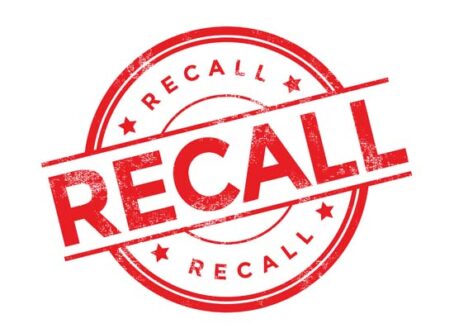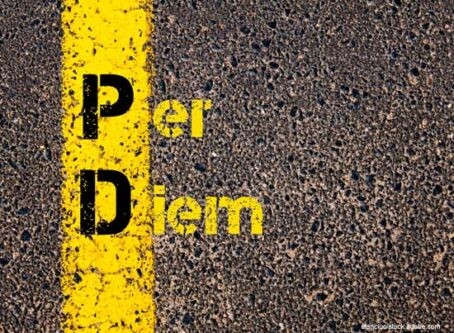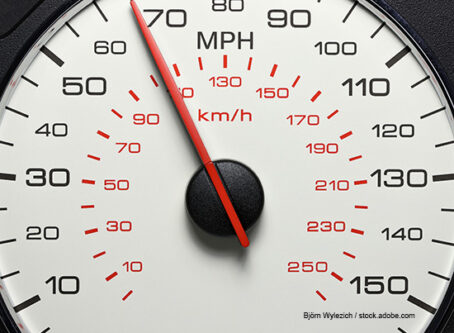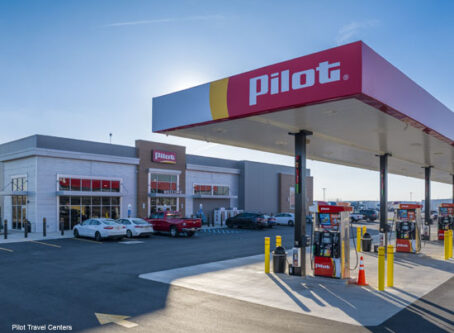Can cameras replace rearview mirrors? Yes, we found
A driver’s world is filled with multiple images every minute, and how clear they affect how well he pilots his truck. Forward vision is one thing, but for about a century what’s happening alongside and to the rear has been transmitted to a driver’s eyeballs and brain by mirrors mounted just outside the cab. The larger they got, the more they helped. Now advancing technology has brought cameras and video screens to augment and even replace those pieces of glass.
A demonstration tractor-trailer owned by Stoneridge, a Novi, Mich.-based maker of actuators and other electronic components for commercial vehicles, was at this week’s Technology & Maintenance Council meeting in Cleveland. It was available for rides and drives by fleet managers and reporters. I did mine about noon on a partly sunny day, first observing how the MirrorEye camera-video screen system works, then driving the rig through downtown streets. We ran the Freightliner Cascadia and its 53-foot van trailer on a long, around-the-block route that included five right turns and a left turn.
I started as a skeptic and ended a believer.
“We” included Mario Gefencu, a veteran professional driver who now manages the company’s four demo rigs. After I climbed aboard, he went through a well-practiced presentation describing the system. It consists of three screens and five cameras: Two cams are on each side near where side-view mirrors would be, and the fifth is above the right-side window. That one looks down toward the pavement and shows a very wide-angle view of the cab’s door and right fender, including the outside of the front wheel and tire, some of the saddle tank, and outward away from the cab. The cam covers the adjacent lane and one more to the right, totally eliminating the blind spot on the truck’s right side. Objects are wildly exaggerated but still recognizable, and I could see everything to the right.


This cam’s images are projected on a small screen hung above the center of the windshield, like the rear-view mirror in your car. Why not put the screen above the right window? I asked Gefencu. It’s so the driver doesn’t have to look far to his right, taking his eyes off the road and putting some strain on his neck, he explained. (I bought the first reason but not so much the second.) During my short drive I didn’t pay much attention to this screen, but might have if a car or bicycle had sneaked up alongside or a bunch of pedestrians were gathered on a street corner that I was about to “bend,” as they say in Boston (or is it somewhere else?).
West Coast mirrors on steroids
The two large vertical screens on the cab’s A pillars are – to use a current cliché – your West Coast mirrors on steroids. The screens show mirrorlike images but larger and in crisp, high-definition color. They’re not 3D, but neither are your mirrors. Each screen is split into a flat glass-like view in the top three-fifths or so, and a convex view on the bottom. The objects in the slightly wide-angle view might be “closer than they appear,” but the distortion is less.
With those A-pillar screens, I felt far less anxious making a sharp right-hand turn with a 53-foot trailer than I am with traditional mirrors. The screen images are bigger and clearer and cover more area. Because the cams automatically pan as a rig articulates, the trailer’s side, rear and tandem stayed in view as I brought it through each 90-degree maneuver. Cam panning is governed by the rig’s forward speed and the amount of spin in the steering gear, Gefencu explained. When backing, a driver must manually pan using a knob on the dash, but this would be automatic if sensors were installed to gauge the relative motion between tractor and trailer. This was a daytime experience, but the system has a night mode that compensates for lack of ambient light. I’d like to try that.

The A-pillar screens do not add any blockage to a driver’s front-quarter views because the pillars are wide anyway, he argued. With no exterior mirrors to peer around, as during turns, the unaided view is better. Cams are in hooded housings so they stay clear of rain and wind-blown dust, and he said he had not needed to clean their lenses in quite a while. With no exterior mirrors, wind resistance is reduced enough to pick up 2-3% in fuel economy, at least at highway speeds, according to tests in Freightliner’s wind tunnel (could that be?).
Can cameras replace mirrors?
Can you legally eliminate external glass mirrors and use a camera-screen system instead? The Federal Motor Carrier Safety Administration issued a waiver to Stoneridge for its testing and demonstrations, Gefencu said, and several fleets have gotten waivers to begin using the MirrorEye system.
“I drove for 21 years and covered 2.5 million miles,” Gefencu said (the fleet was White Line Express in Michigan). “Now I wish I had had this during that time.”
What’s it cost? List price is $4,900 plus installation, which is easier if the cab of a new truck is prewired, Gefencu said. That will make some folks balk, but with volume sales, prices will come down. Of course, it’s another electric/electronic system that must be maintained, but there is some safety and driver satisfaction potential. Incidentally, if one cam goes out, the others keep working. If they all lose power, well, the truck has to stop anyway, correct? LL
More equipment news from Land Line’s Tom Berg:









